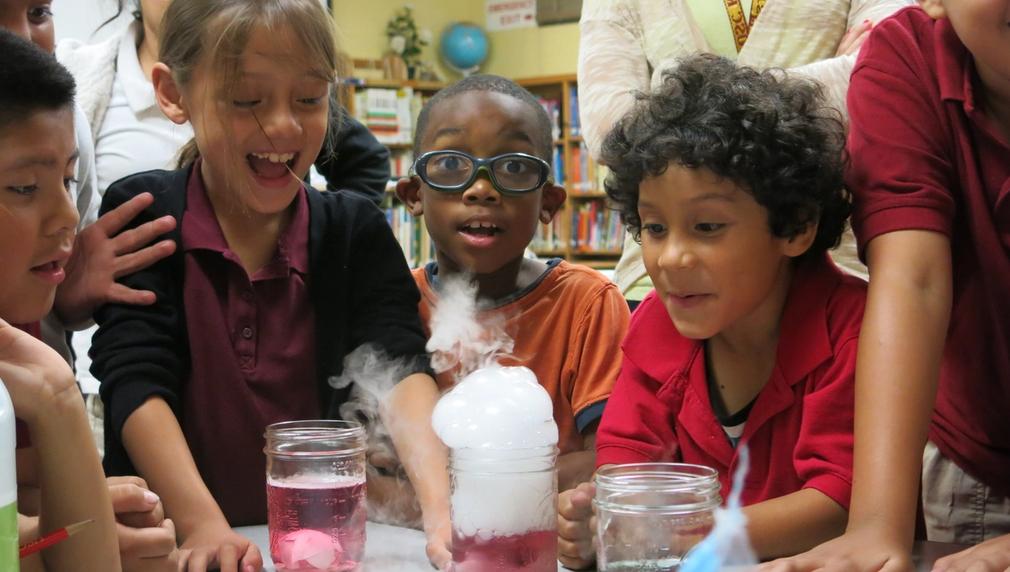USC JEP STEM - Empowering Youth Through STEM Education
The USC JEP's STEM programs deliver hands-on, inquiry-based science education to underserved elementary students in Los Angeles, fostering curiosity, scientific literacy, and interest in STEM careers. By engaging diverse instructors, our initiatives bring real-world science experiences, culturally relevant role models, and professional development to students and teachers alike. These programs aim to close educational equity gaps, promote equitable access to high-quality STEM learning in our community and inspire next generation of scientists.

What is the primary issue area that your application will impact?
K-12 STEAM education
In which areas of Los Angeles will you be directly working?
South LA
In what stage of innovation is this project, program, or initiative?
Expand existing project, program, or initiative (expanding and continuing ongoing, successful work)
What is your understanding of the issue that you are seeking to address?
Many Los Angeles elementary schools, particularly those serving low-income students of color, face a critical lack of hands-on, inquiry-based science education aligned with current standards. This gap contributes to lower science literacy, limited exposure to STEM careers, and persistent inequities in academic achievement and opportunity.
Science testing data from our seven partner schools—Thirty-Second Street Performing Arts Magnet, Foshay Learning Center, Norwood Street Elementary, Lenicia Weemes Elementary, Vermont Avenue Elementary, John Mack Elementary, and Dr. Theodore T. Alexander, Jr. Science Center School—reflects the broader challenges faced by Title I schools in Los Angeles. Prior to participation in the JEP STEM Education Programs, students at these sites typically received only half the number of science lessons recommended by LAUSD and state standards, resulting in lower science literacy and limited engagement with STEM subjects.
Describe the project, program, or initiative this grant will support to address the issue.
The JEP STEM curriculum functions as an effective supplement of current science instruction in Los Angeles Unified School District (LAUSD) schools. It incorporates Next Generation Science Standards (NGSS), as well as LAUSD and statewide grade-level science learning standards, with the ultimate goal of strengthening science literacy and promoting interest in scientific careers.
JEP STEM's primary objectives are to present accessible and engaging science lessons to the neighborhood children around the university, assist in alleviating the fear and stress that is often associated with studying science, and help students apply what they learn in the classroom to the real world and to their own lives. In addition to the myriad positive benefits of JEP STEM for the neighborhood schools and students, JEP STEM teaching assistants receive valuable opportunities and professional training to hone their mentorship skills and gain practical teaching experience, allowing them to be more informed about how to directly respond to the individual needs of the schools, communities and families.
We are currently offering our programming in 2nd through 5th grade at our 7 partner schools, and funding from LA2050 would allow us to expand so that we could be Kindergarten through Fifth grade at all of our partner schools which would increase our impact by 1680 students ergo adding Kindergarten and First grade to the grades that we serve as an organization.
Describe how Los Angeles County will be different if your work is successful.
If our work is successful, Los Angeles County will have a more science-literate and STEM-ready population, especially among historically underserved communities. Currently, our STEM programs reach 2,500 students in 7 schools, but with our established infrastructure, we could immediately expand to serve 17,000 students across the USC Family of Schools—and ultimately, our vision is to become the main provider of hands-on, inquiry-based science education for all 560,000 LAUSD elementary students. This expansion would foster critical thinking, close educational equity gaps, and build a diverse pipeline of future innovators for LA’s workforce especially within STEM fields.
Approximately how many people will be impacted by this project, program, or initiative?
Direct Impact: 2,750
Indirect Impact: 4,000